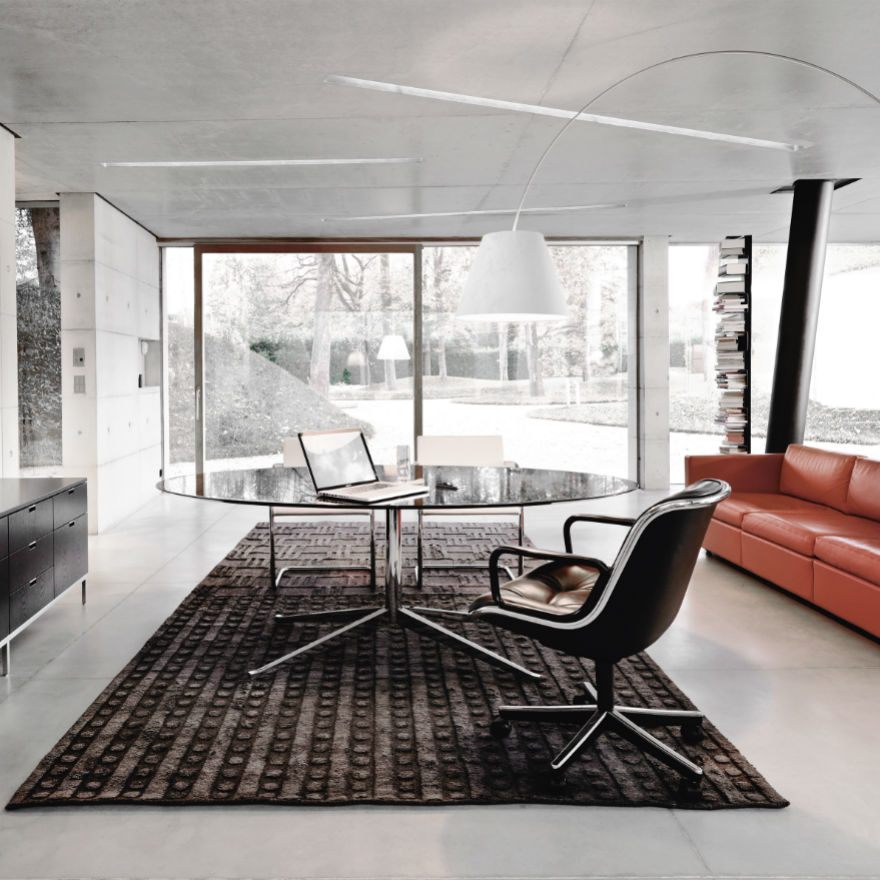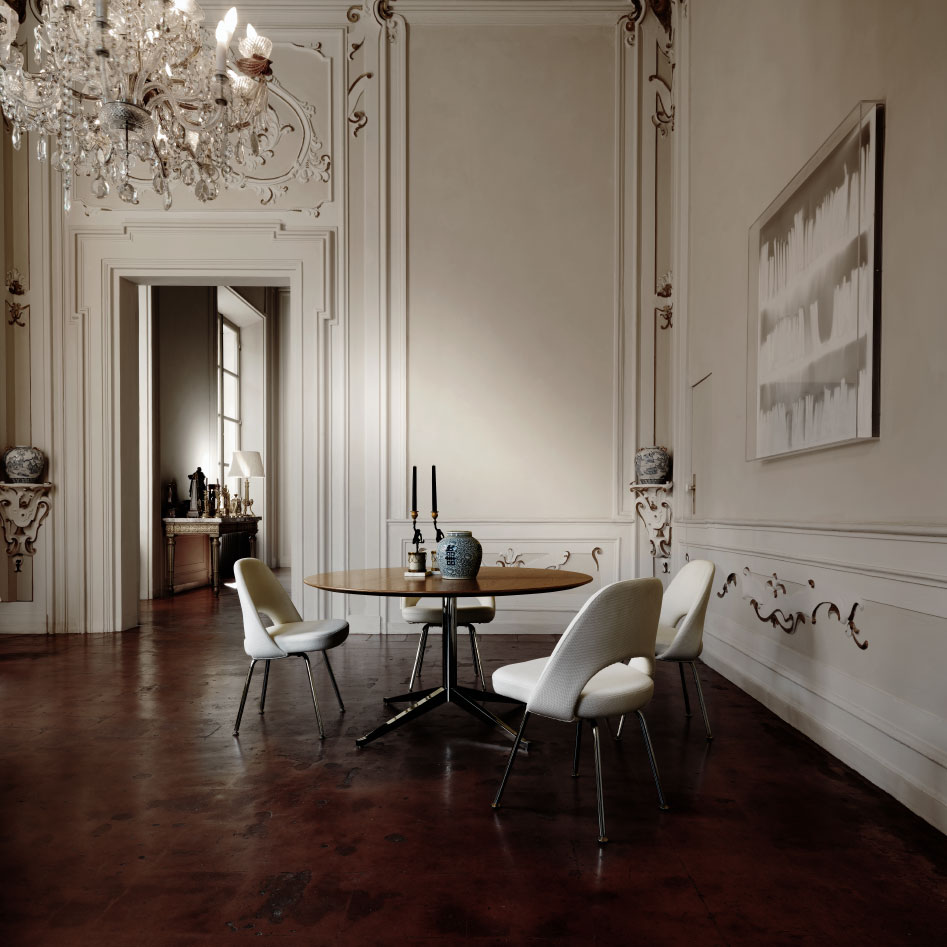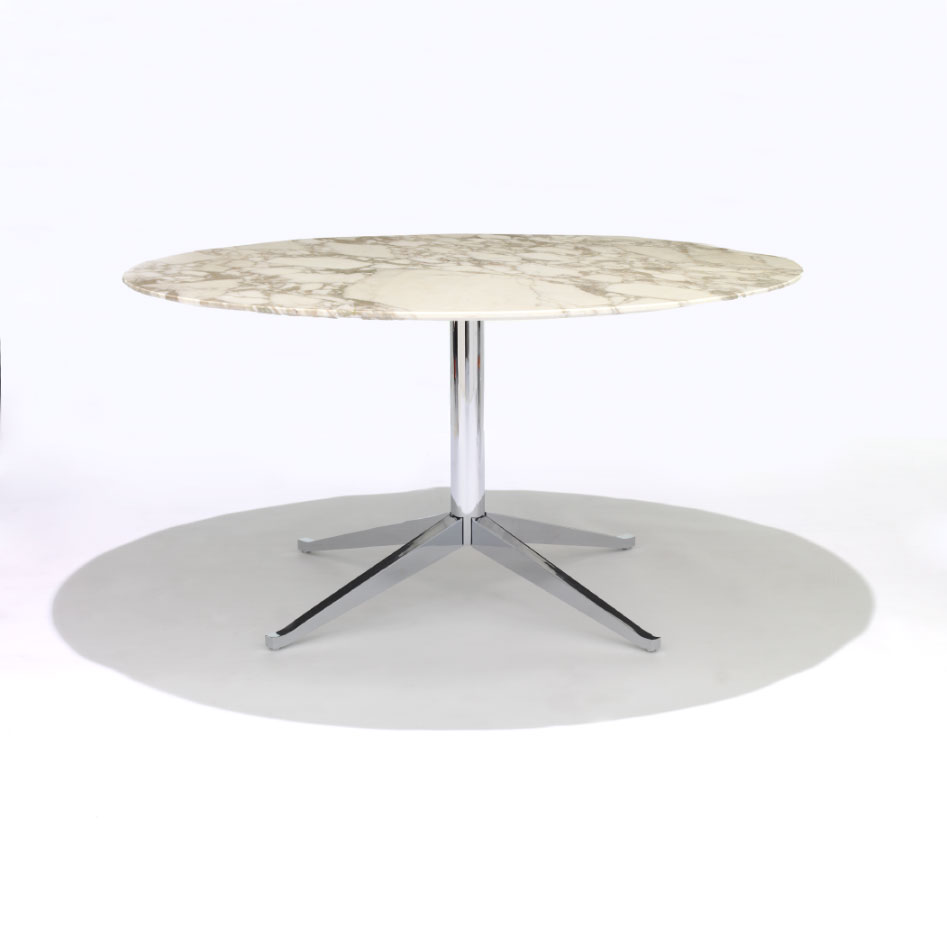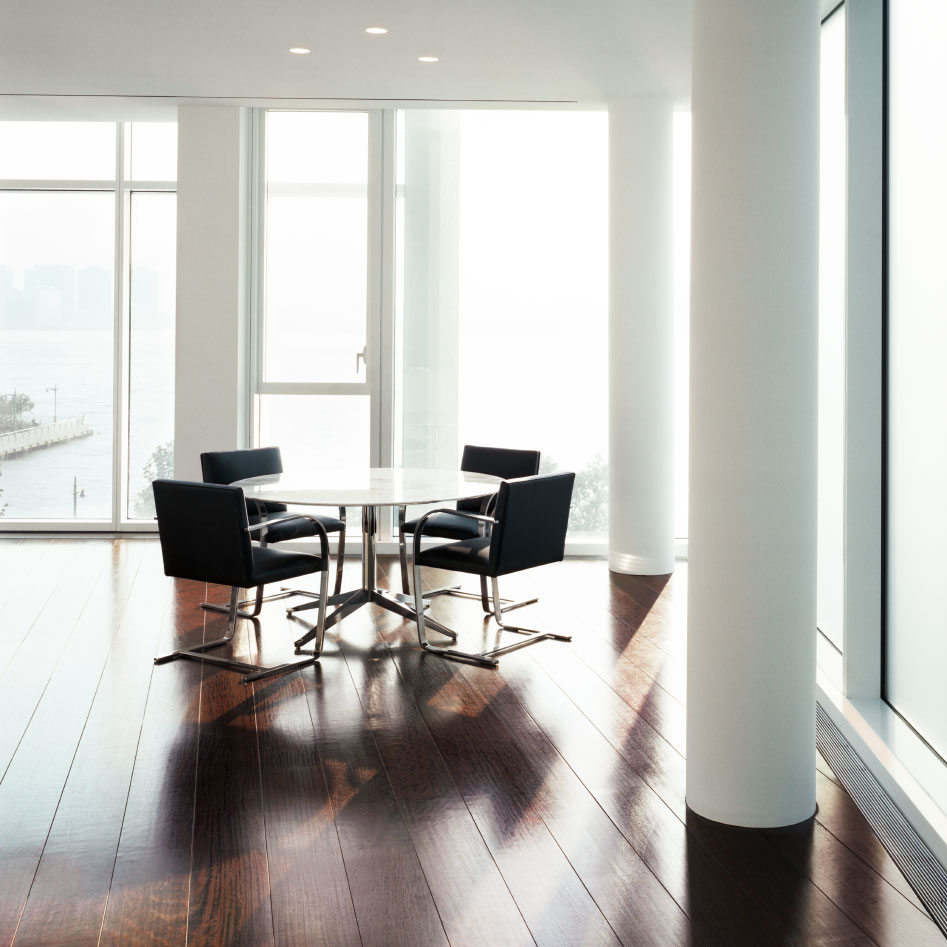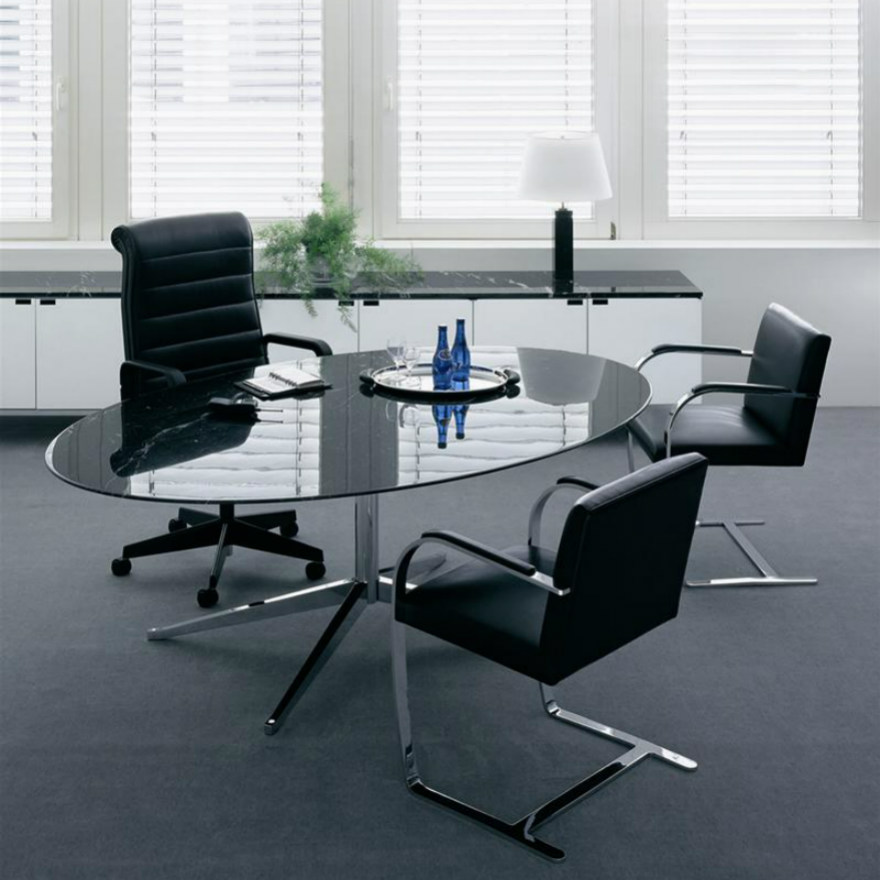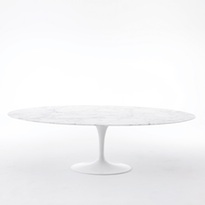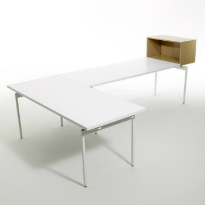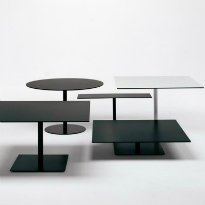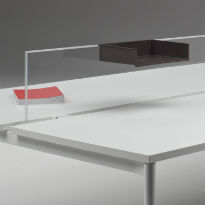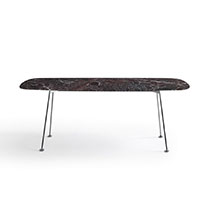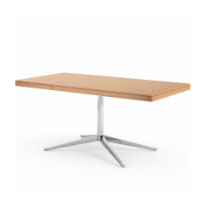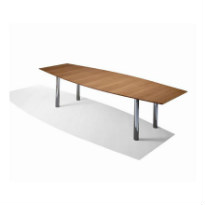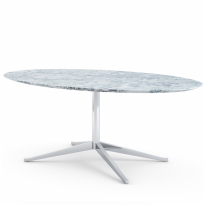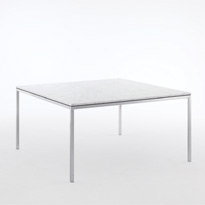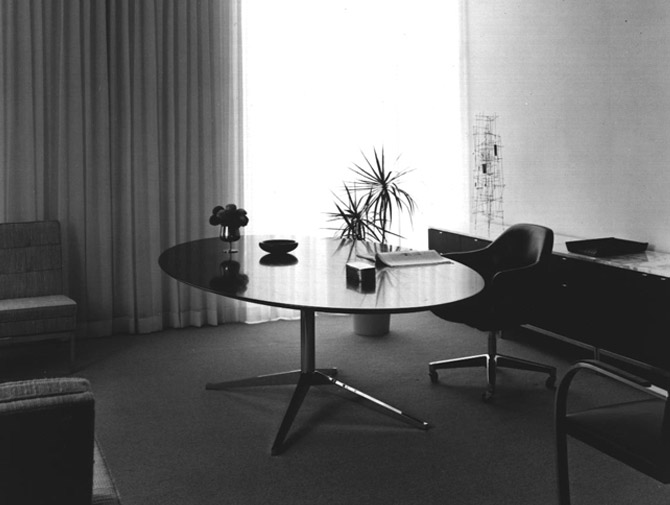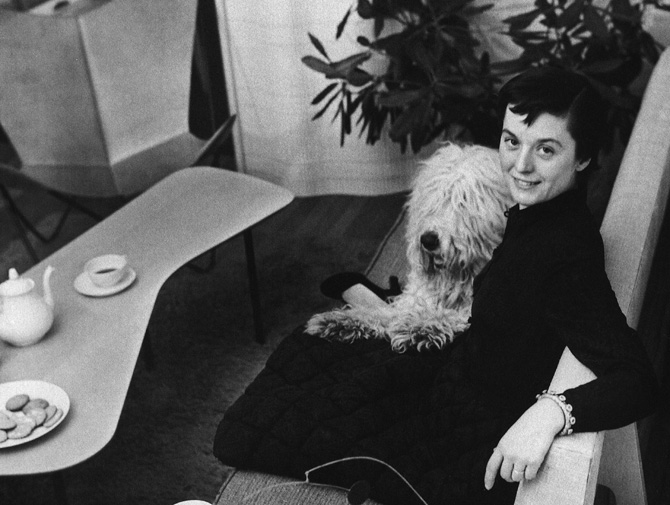Florence Knoll Table Desk
Designed by Florence Knoll, 1961
Florence Knoll described her designs as the meat and potatoes, the fill-in pieces which had to be provided. "I needed the piece for a job and it wasnt there, so I designed it." While this may have been the motivation for the 1961 Table Desk, the perfectly proportioned and flawlessly detailed result is anything but a fill-in piece.
ShareTop
-
 X
X
Arabescato marble, Gloss finish
Ivory white with dark grey veining. May contain random green vein. Hues, veins, crystals, fossils and distinctive marks will vary from piece to piece. Shiny coated marbles have transparent, high-polish, polyester coating to prevent use-associated stains. Even with this protection, coated marbles should not be used outdoors. Marble coating may yellow over time giving the marble a warmer tone.
-
 X
X
Arabescato marble, Satin finish
Ivory white with dark grey veining. May contain random green vein. Hues, veins, crystals, fossils and distinctive marks will vary from piece to piece. The Satin finish gives the stonea natural, honed appearance while providing a protective coating. Even with this protection, coated marbles should not be usedoutdoors. Marble coating may yellow over time givin the marble a warmer tone.
-
 X
X
Statuarietto marble, Gloss finish
Shiny coated marbles have transparent, high-polish, polyester coating to prevent use-associated stains. Even with this protection, coated marbles should not be used outdoors. Marble coating may yellow over time giving the marble a warmer tone.
-
 X
X
Statuarietto marble, Satin finish
The Satin finish gives the stonea natural, honed appearance while providing a protective coating. Even with this protection, coated marbles should not be usedoutdoors. Marble coating may yellow over time givin the marble a warmer tone.
-
 X
X
Nero Marquina marble, Gloss finish
Rich black with random veins that can vary from white to gold. Hues, veins, crystals, fossils and distinctive marks will vary from piece to piece. Shiny coated marbles have transparent, high-polish, polyester coating to prevent use-associated stains. Even with this protection, coated marbles should not be used outdoors. Marble coating may yellow over time giving the marble a warmer tone.
-
 X
X
Nero Marquina marble, Satin finish
Rich black with random veins that can vary from white to gold. Hues, veins, crystals, fossils and distinctive marks will vary from piece to piece. The Satin finish gives the stonea natural, honed appearance while providing a protective coating. Even with this protection, coated marbles should not be usedoutdoors. Marble coating may yellow over time givin the marble a warmer tone.
-
 X
X
Brown Emperador marble, Gloss finish
Shiny coated marbles have transparent, high-polish, polyester coating to prevent use-associated stains. Even with this protection, coated marbles should not be used outdoors. Marble coating may yellow over time giving the marble a warmer tone.
-
 X
X
Brown Emperador marble, Satin finish
The Satin finish gives the stonea natural, honed appearance while providing a protective coating. Even with this protection, coated marbles should not be usedoutdoors. Marble coating may yellow over time givin the marble a warmer tone.
-
 X
X
Verde Alpi marble, Gloss finish
Shiny coated marbles have transparent, high-polish, polyester coating to prevent use-associated stains. Even with this protection, coated marbles should not be used outdoors. Marble coating may yellow over time giving the marble a warmer tone.
-
 X
X
Verde Alpi marble, Satin finish
The Satin finish gives the stonea natural, honed appearance while providing a protective coating. Even with this protection, coated marbles should not be usedoutdoors. Marble coating may yellow over time givin the marble a warmer tone.
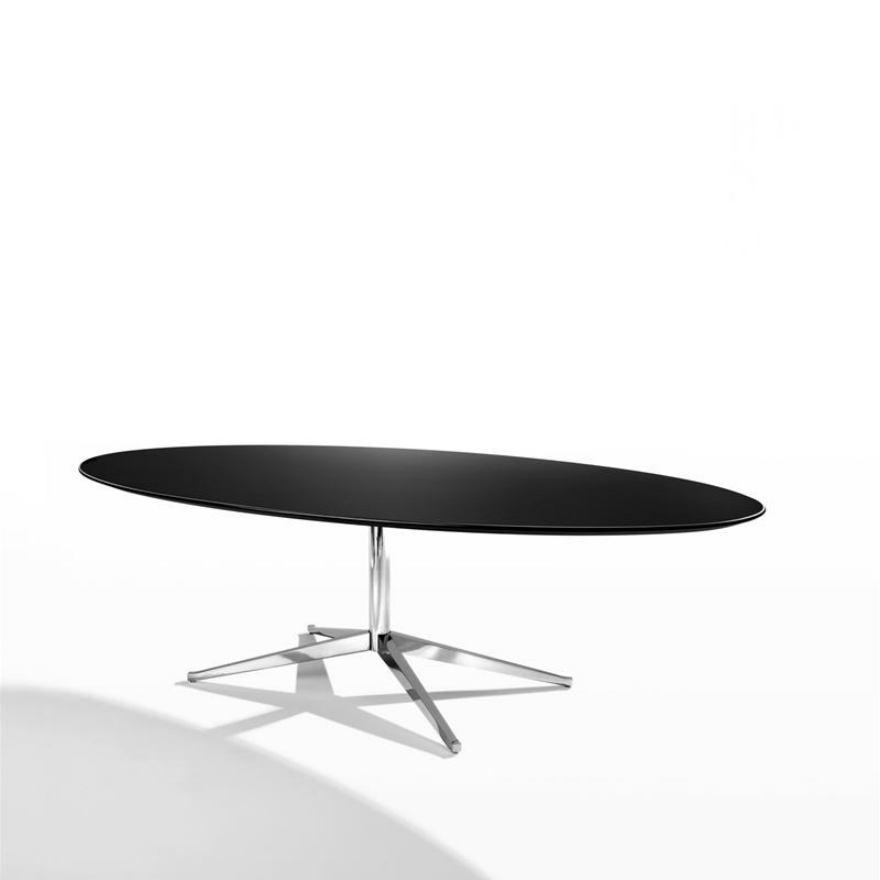
Top
-
 X
X
Arabescato marble, Gloss finish
Ivory white with dark grey veining. May contain random green vein. Hues, veins, crystals, fossils and distinctive marks will vary from piece to piece. Shiny coated marbles have transparent, high-polish, polyester coating to prevent use-associated stains. Even with this protection, coated marbles should not be used outdoors. Marble coating may yellow over time giving the marble a warmer tone.
-
 X
X
Arabescato marble, Satin finish
Ivory white with dark grey veining. May contain random green vein. Hues, veins, crystals, fossils and distinctive marks will vary from piece to piece. The Satin finish gives the stonea natural, honed appearance while providing a protective coating. Even with this protection, coated marbles should not be usedoutdoors. Marble coating may yellow over time givin the marble a warmer tone.
-
 X
X
Statuarietto marble, Gloss finish
Shiny coated marbles have transparent, high-polish, polyester coating to prevent use-associated stains. Even with this protection, coated marbles should not be used outdoors. Marble coating may yellow over time giving the marble a warmer tone.
-
 X
X
Statuarietto marble, Satin finish
The Satin finish gives the stonea natural, honed appearance while providing a protective coating. Even with this protection, coated marbles should not be usedoutdoors. Marble coating may yellow over time givin the marble a warmer tone.
-
 X
X
Nero Marquina marble, Gloss finish
Rich black with random veins that can vary from white to gold. Hues, veins, crystals, fossils and distinctive marks will vary from piece to piece. Shiny coated marbles have transparent, high-polish, polyester coating to prevent use-associated stains. Even with this protection, coated marbles should not be used outdoors. Marble coating may yellow over time giving the marble a warmer tone.
-
 X
X
Nero Marquina marble, Satin finish
Rich black with random veins that can vary from white to gold. Hues, veins, crystals, fossils and distinctive marks will vary from piece to piece. The Satin finish gives the stonea natural, honed appearance while providing a protective coating. Even with this protection, coated marbles should not be usedoutdoors. Marble coating may yellow over time givin the marble a warmer tone.
-
 X
X
Brown Emperador marble, Gloss finish
Shiny coated marbles have transparent, high-polish, polyester coating to prevent use-associated stains. Even with this protection, coated marbles should not be used outdoors. Marble coating may yellow over time giving the marble a warmer tone.
-
 X
X
Brown Emperador marble, Satin finish
The Satin finish gives the stonea natural, honed appearance while providing a protective coating. Even with this protection, coated marbles should not be usedoutdoors. Marble coating may yellow over time givin the marble a warmer tone.
-
 X
X
Verde Alpi marble, Gloss finish
Shiny coated marbles have transparent, high-polish, polyester coating to prevent use-associated stains. Even with this protection, coated marbles should not be used outdoors. Marble coating may yellow over time giving the marble a warmer tone.
-
 X
X
Verde Alpi marble, Satin finish
The Satin finish gives the stonea natural, honed appearance while providing a protective coating. Even with this protection, coated marbles should not be usedoutdoors. Marble coating may yellow over time givin the marble a warmer tone.


